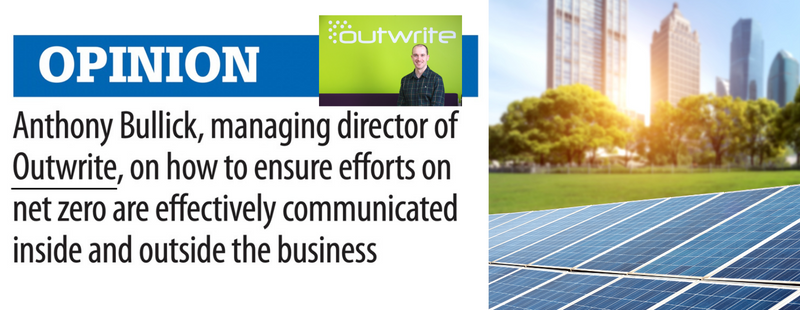This post first appeared in Anthony Bullick’s Daily Post column.
A business’ aim to become net zero, or at the very least reduce its carbon footprint, is a key focal point for many stakeholders.
Existing and potential employees want to know what their employer stands for beyond profits and clients are increasingly seeking to work with brands that align with their own values. In addition, the local community anticipate a company will respect the environment in and around its operations.
While carrying out actions to assist in the fight against climate change is the most important step, strategically communicating efforts ensures the people who matter most to your organisation, have no doubt about who you truly are.
Firstly, make sure your activity matches the expectations and desires of your stakeholders. What is important to them?
Another vital step to take at the outset is understanding where your target audiences are. What media outlets do they consume? What social media platforms are they on, and where do they spend their time, for example is it in specific Facebook groups? For employees, do they actually look at the intranet or the app that was launched?
Linked to that is how they prefer to digest information. Is it reading materials, watching videos, or listening to podcasts?
Employ an integrated approach to the PR and communications by repurposing content to get a bigger return on your investment by reaching as many stakeholders as possible.
Send newsworthy stories to the media, and line up a company spokesperson to talk about the topic in response to interest from TV and radio. In addition, take part in features and submit expert commentary as editorial to strengthen your messaging.
Create a hub on your site for all environmental, social and governance (ESG) content to include news articles, blog posts, thought leadership and other key activity such as ESG reports.
Include relevant pieces in your e-newsletter and consider whether a print newsletter, printed on sustainably sourced paper, will help cut through the digital noise. Design it in the style of a newspaper or magazine to provide readers with a familiar format.
Share items to social media where necessary, including within additional features in each platform such as groups in Facebook and LinkedIn, as well as content on Instagram stories.
Film and edit news-style video interviews with some of the team to add a human element and face to the business’ key messages. The finished cuts can be published across all your owned channels including social, website and email.
Finally, as with all PR and marketing communications, review analytics and undertake evaluation to make tweaks and continually enhance and improve activity.

